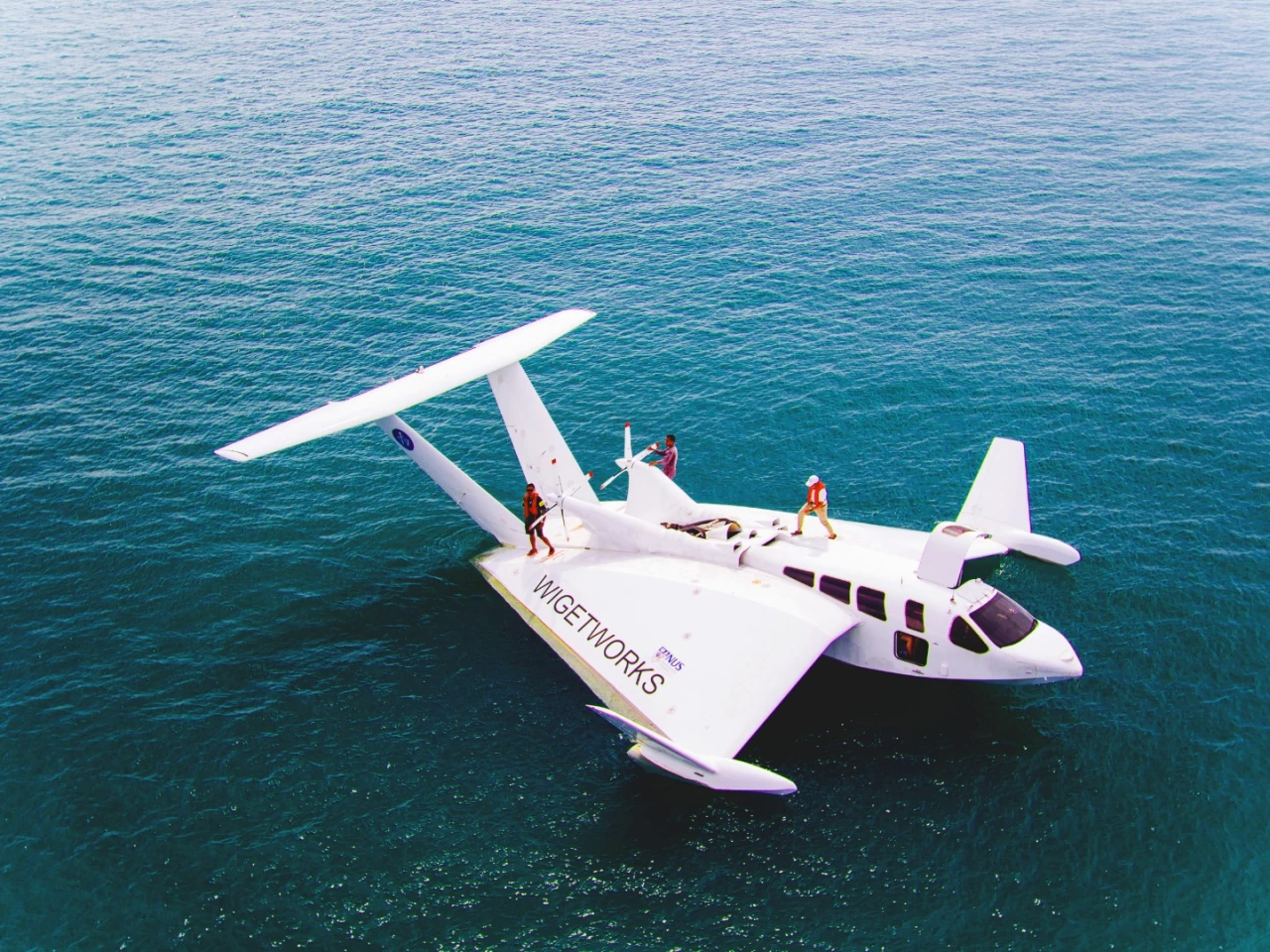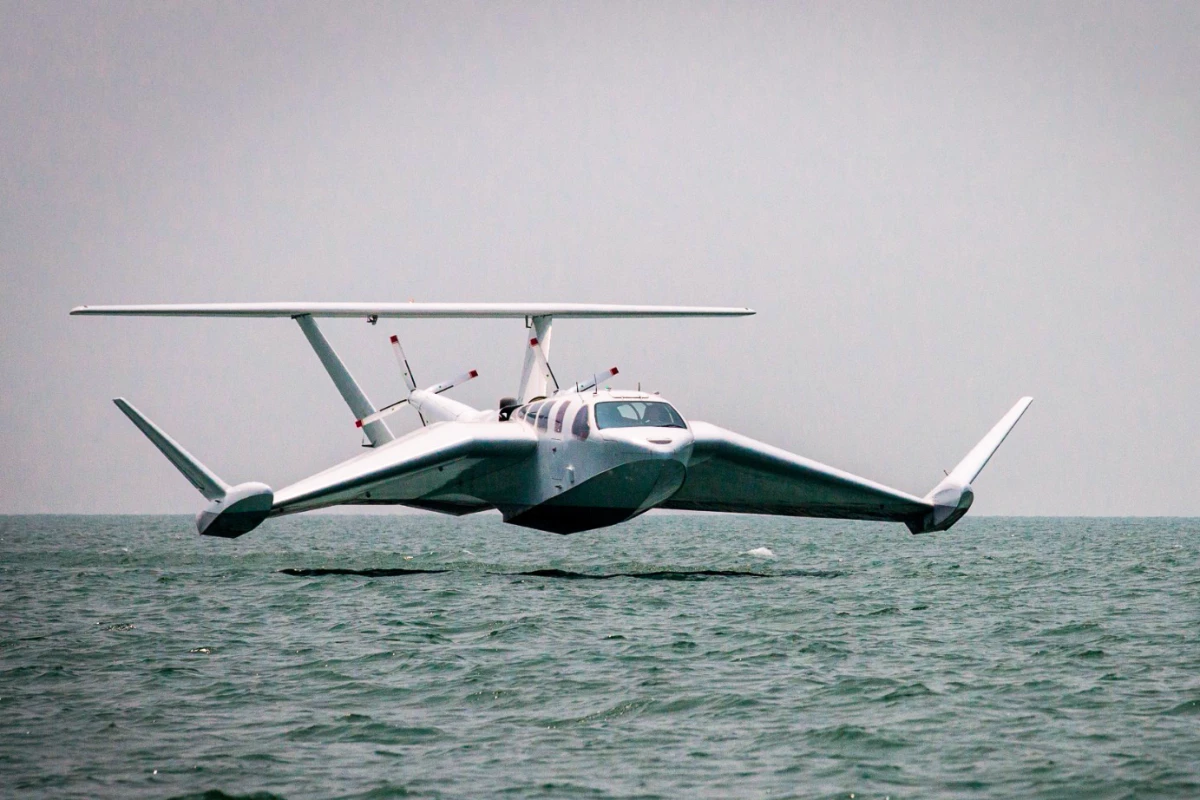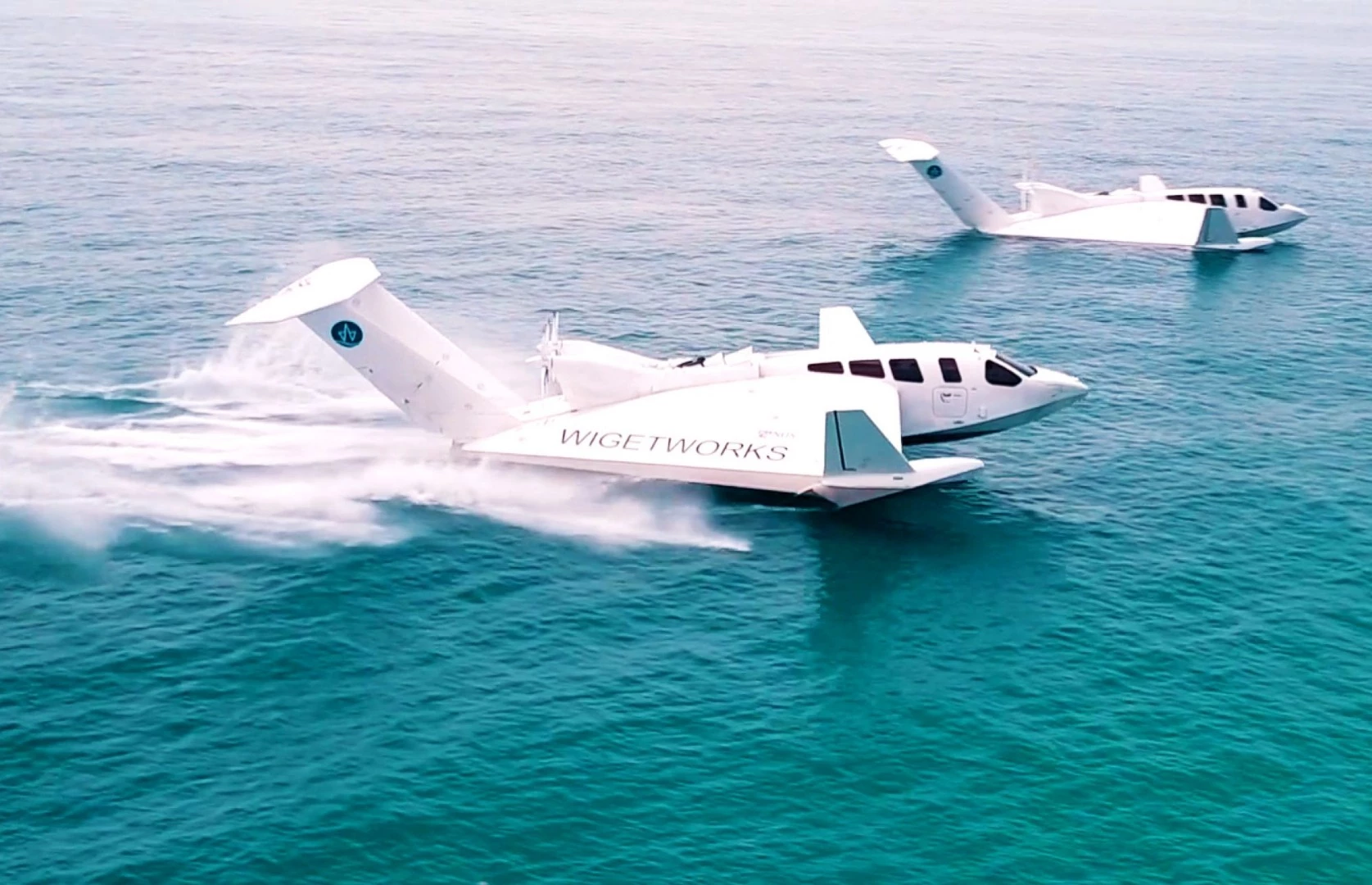Hovering uncannily close to the waves, the Airfish-8 carves its way over water three times quicker than a boat, and 2.3 times more efficiently than an aircraft. Singapore's ST Engineering has announced its first orders, set to enter service in 2025.
It's arresting enough to look at even when it's just floating, with its enormous reverse-delta wing, large double T-tail, top-mounted pusher props and wickedly upswept wingtips. But to watch it in action, gliding perilously close to the ocean, leaving more of an indentation behind it than a wake? Absolutely spectacular.
The Airfish-8 will carry two crew, and either 8 passengers or up to a ton of cargo. It's a combustion-powered seaplane requiring no particular infrastructure, since it'll operate off regular jetty facilities, and its 500-horsepower V8 car engine fills up on regular unleaded.
It'll push itself out of port on the water, then accelerate to takeoff speed, at which point it'll lift off and stay between 2-23 ft (0.6-7 m) over the water surface, taking advantage of the bonus lift in this wing-in-ground effect zone to fly low and efficiently at up to 90 knots (104 mph/167 km/h). Much faster than boats, then – and a lot more comfortable when the water's choppy, although it'll still have to take off and land in the waves.
It's not as fast as a quick seaplane, but it's considerably more efficient, as well as easier to fly. And when it comes to tourist operations, it's hard to ignore just how gorgeous this thing is in motion; people will book a long way ahead for an Airfish ride, we suspect.
As we wrote last time we looked at the Airfish, this is the realization of 1960s-era designs from one Dr. Alexander Martin Lippisch, who pioneered this reverse delta/t-tail configuration back when Russian Ekranoplans were still roaming the Earth. This wing configuration allows a wing-in-ground effect vehicle to fly at altitudes up to 50% of its wingspan, letting it rise higher when conditions are choppier where the Ekranoplans of the day had to stay under about 10%.
While it still looks like something out of Star Wars some 60 years after the initial idea, the Airfish is a relatively proven design and certainly not the high-tech option in 2024. For passenger operations, that'll be the upcoming Regent Seaglider, which is fully electric, and also uses a hydrofoiling system to rise out of the water for a low-drag takeoff into ground effect. And in a military sense, DARPA is working on a giant "Liberty Lifter" X-Plane that'll haul up to 100 tons of cargo.
ST Engineering has entered a joint venture with Peluca, formerly known as Wigetworks, to commercialize the Airfish under the name ST Engineering AirX. AirX has now announced its first customer sale, a letter of intent (LOI) that'll send up to 10 aircraft to Eurasia Mobility Solutions, where they'll be used in tourism and private transportation around Turkey. Staged delivery is planned to begin in 2025.

Since it's an LOI, not an actual sale, we'd presume there are many possible ways Eurasia can wriggle out of this agreement, depending on how AirX goes with getting the thing certified for manufacturing. According to Breaking Defense, the US marines have also "discussed" the Airfish, and then Singapore military "has viewed it." We won't be getting too excited about that just yet!
But in a pure sci-fi sense, we'd love to see these things out there working. They might not be clean-running like the Seaglider, but they look so damn cool we have to root for them.
Source: ST Engineering







